Photographs: Rajesh Karkera/Rediff.com Sharmistha Mukherjee in New Delhi
Toyota is hoping to drive volumes in the passenger car market in the country with its made-for-India small car, the Liva.
After four years of intensive research carried out by 2,000 engineers across Japan and India, the world's largest car maker Toyota is set to step into the mass segment of the passenger car market in India today with its small car Liva.
The hatchback developed on the Etios platform is the cheapest offering from the Toyota stable and is expected to drive volumes in India and, eventually, other emerging markets.
The Etios sedan, which made its global debut in the country in December 2010, has sold over 20,000 units till date. This gives Toyota the hope that the new small car will catapult it among the top manufacturers in the second fastest growing automobile market globally.
...
Toyota aims to make it big with its small car
Photographs: Reuters
"In saturated markets of the United States and Japan we have less room to grow," says Hiroshi Nakagawa, managing director, Toyota Kirloskar Motor (TKM). "We are, therefore, focusing on countries like Brazil, Russia, India and China. The Etios was designed keeping the Indian customer in mind and will help boost volumes in the country."
TKM is expecting to double sales volumes to 140,000 units in 2011 on the back of the Etios and the Liva.
Sandeep Singh, deputy managing director, TKM, says, "The duo would help us gain critical mass in India. This year we are expecting to sell 140,000 units; in 2012, this would go up to 210,000 units. We expect both the sedan and the hatchback to follow the same growth trajectory."
Toyota has a market share of 3.3 per cent at present. By 2015, it hopes to enhance capacity further to sell 350,000 units in India - which is what the country's second largest car maker Hyundai Motor India sold in the domestic market in 2010-11.
...
Toyota aims to make it big with its small car
Photographs: Toru Hanai/Reuters
Cost control
Experts hold Toyota may save between 10 to 15 per cent in production cost per car with the Etios and the Liva developed on the same platform.
VG Ramakrishnan, senior director, automotive practice, Frost & Sullivan, says, "The biggest cost in developing a car lies in developing the platform which comprise the engine, the transmission and the steering and suspension components. By developing multiple vehicles on the same platform, a company can save substantially in research and development costs, engineering and tooling expenses and also avail of benefits from vendors by procuring components in volumes."
The practice has precedent both among homegrown manufacturers and global auto majors.
For instance, Tata Motors' small car Indica and sedans Indigo and Indigo Marina are built on the same platform, while Indo-Japanese car maker Maruti Suzuki rolled out the premium hatchback Swift and entry-level sedan DZire on the Suzuki Swift platform.
...
Toyota aims to make it big with its small car
Photographs: Reuters
Ramakrishnan adds, "When you develop vehicles on the same platform you do not require separate machinery for assembling the products. This ensures that you get returns on investments much faster."
Toyota spent close to Rs 3,200 crore (Rs 32 billion) on developing the Etios platform and in setting up a second plant at Bidadi, Karnataka, with the capacity to manufacture 70,000 units of the Etios and the Liva annually.
Faced with strong demand for the sedan, the company which is present through a joint-venture agreement with the Kirloskar Group (Toyota Motor Corporation 89 per cent, Kirloskar Group 11 per cent), is investing Rs 300 crore (Rs 3 billion) to ramp up capacity by 40 per cent to 210,000 units across both its plants near Bangalore.
After the capacity expansion programme is completed by second quarter of next year, the first plant will manufacture 90,000 units of the Innova and the Fortuner. The second plant will roll out 100,000 units of the Etios and the Liva and another 20,000 units of the Corolla Altis.
...
Toyota aims to make it big with its small car
Photographs: Reuters
So how does Toyota hope to rake in the numbers in the intensely competitive small car segment in India? Currently, Maruti Suzuki with a half a dozen models - ranging from the best-selling car Alto to WagonR, Swift and Zen Estilo - accounts for over 55 per cent of the category.
US-based auto makers General Motors and Ford have both launched new products, Chevrolet Beat and Ford Figo, specifically for the Indian market last year. Japanese auto maker Honda Motor Corporation is gearing up to introduce a sub-Rs 5 lakh car Brio in October this year.
Singh is not worried, "Etios has already brought about a quality revolution in the Indian market. Indian customers are aware of what Toyota stands for and the Liva has that DNA."
...
Toyota aims to make it big with its small car
Photographs: Reuters
Geared for growth
In India, while 70-80 per cent of the multi-purpose vehicles are driven by chauffeurs, cars in the B segment tend to be driven by the customer himself.
"We have taken feedback from people from across customer groups - young, old, single and married. We tried to ensure maximum passenger comfort while developing the car."
Since early 2008, when Toyota first decided to go ahead with the small car project for India, Narita Ke (chief engineer behind the Etios) has made innumerable trips to India, and lived with families here to understand their habits and needs.
He observed, for instance, that all Indians are in a hurry to take off as soon as the traffic signal turns green; they therefore need that additional pick up. Again, a car has to be easy to park.
Indians often accommodate three passengers on the back seat; so it is essential to offer a comfortable rear. Thus the Liva "offers a very good driving experience, very good space, high ground clearance and best-in-class fuel efficiency," says Singh.
...
Toyota aims to make it big with its small car
Photographs: Toru Hanai/Reuters
The company has put special emphasis on fuel efficiency and the cost of ownership. Singh says that the life of all Toyota parts is long, which reduces the need for replacements.
"We have proved that Toyota cars are low maintenance. That's why their resale value is the highest. Spares are easily available. On an average our cost of ownership is at least 15 per cent less than competition."
The strategic pricing is an add-on for the products. While the Etios is priced between Rs 4.96 lakh and Rs 6.86 lakh, sources say the Liva would bear a price tag between Rs 4 lakh and Rs 5 lakh - reasonably lower than other products in the category.
The prices of Maruti's Swift, Hyundai's i20, Volkswagen's Polo or Nissan's Micra start from Rs 4.3 lakh and go all the way up to Rs 8 lakh for different variants.
To keep costs low the Etios and Liva have localisation content of 70 per cent.
...
Toyota aims to make it big with its small car
Photographs: Petr Josek/Reuters
Yoshikori Noritake, chief engineer, product planning, Toyota Motors, had earlier said, "While for our other cars, engineers took designs to suppliers and gave them specifications for components, it was the opposite with Etios. We researched with suppliers on the materials available and went back to the drawing board to build cars for the Indian market at aggressive pricing points."
TKM is setting up an engine plant with a capacity of 100,000 per annum by 2012 for the Etios and a transmission plant (capacity of 240,000 per annum) by 2013.
Post the commissioning of the two units, localisation levels would be as high as 90 per cent for the two cars.
The pivot of the Etios game plan is the Toyota dealer. The company has increased the number of dealers from 40 to 60 and the number of sales and service points from 82 to 150 in the last two years. By mid-2013, TKM would have 175 outlets across the country.
...
Toyota aims to make it big with its small car
Photographs: Reuters
The numbers might look small but Singh says they cover almost 85 per cent of the market. To keep its dealers happy, Toyota gives them a profit margin of 4 per cent on cars (industry norm is 3 to 3.5 per cent) and 18 to 20 per cent on spares (industry: 15 per cent).
Eighty per cent of the owners bring their cars to a Toyota authorised station for service during the warranty period (industry: 50 to 60 per cent), which falls to 70 per cent after the warranty (industry: 30 to 40 per cent).
Also, the rate of conversion of footfalls at Toyota dealerships is as high as 32 per cent, way above the industry average of 20 per cent. Can the Liva take it higher? Well, if nothing else, it is sure to unleash a price war in the segment.
Toyota's recent moves in India should be seen against its larger global plan. Globally, Volkswagen is working to topple Toyota as the world's largest car maker by 2018. The gap between the two is not too wide even now.
...
Toyota aims to make it big with its small car
Photographs: Reuters
In 2010, Volkswagen AG grew by 14 per cent to sell 7.14 million vehicles worldwide compared to Toyota whose sales increased 8 per cent to 8.42 million units. India and developing markets such as Brazil, Indonesia, Russia and China could well decide who wins the race finally.
Among its recent initiatives in India, Volkswagen has launched the Polo hatchback and the sedan Vento, and invested Rs 3,200 crore (Rs 32 billion) in a new factory at Chakan near Pune that can roll out 110,000 cars in a year.
The Etios could be Toyota's answer to Volkswagen's recent moves.
Since 2005, Toyota has strengthened its position in Africa, Asia and South Africa with the launch of its multi-purpose vehicle Innova, the sports utility vehicle Fortuner and pick-up truck Hilux on the IMV (innovative international multipurpose vehicle) platform.
However, in India its presence was largely limited to high-end vehicles - the Corolla Altis and Camry (sedans), the Innova and SUVs Fortuner, Prado and Land Cruiser Toyota's - which gave it 15 per cent share in the overall automobile market in India.


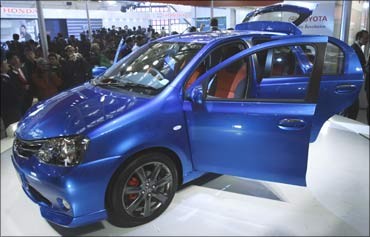
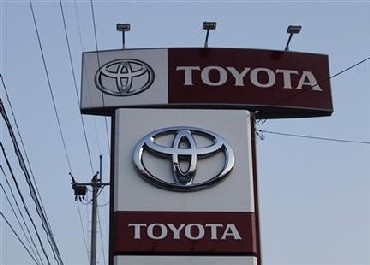
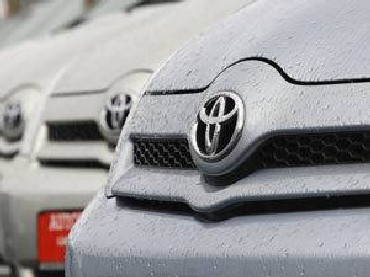
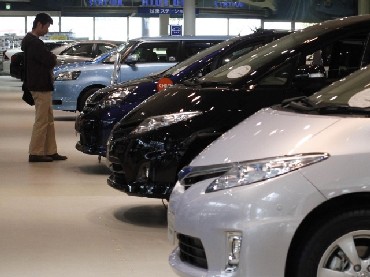


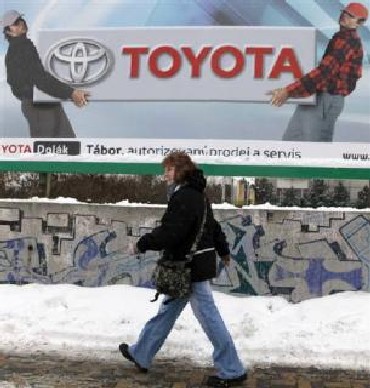
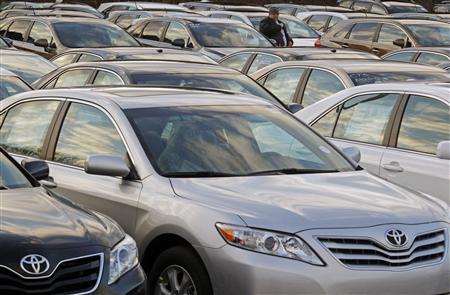


article